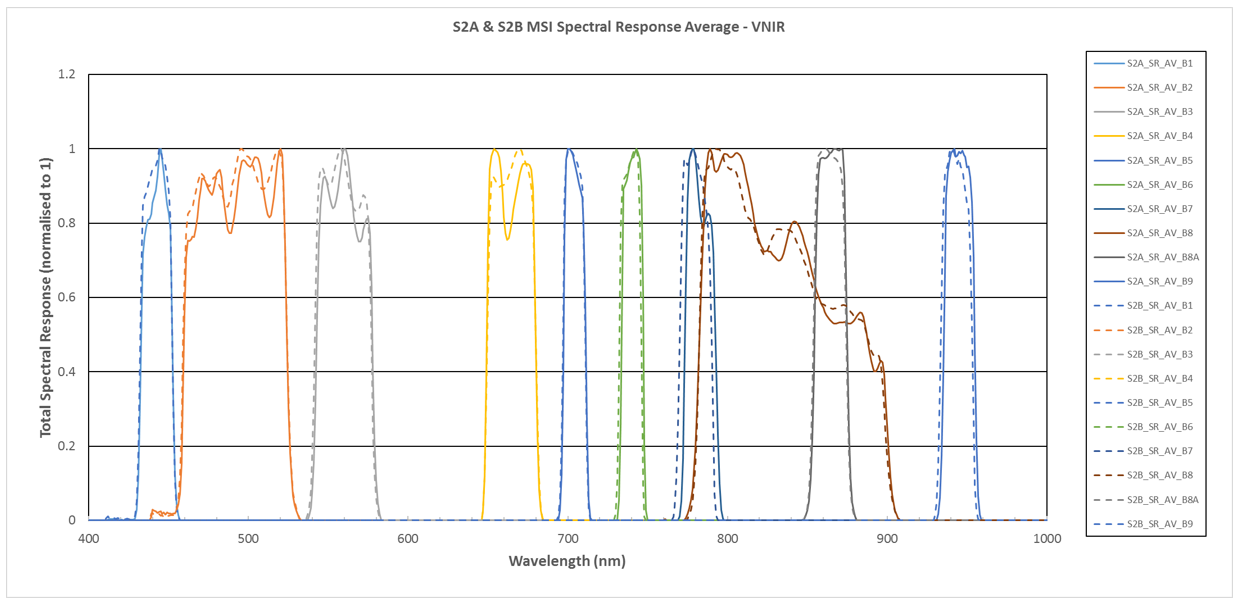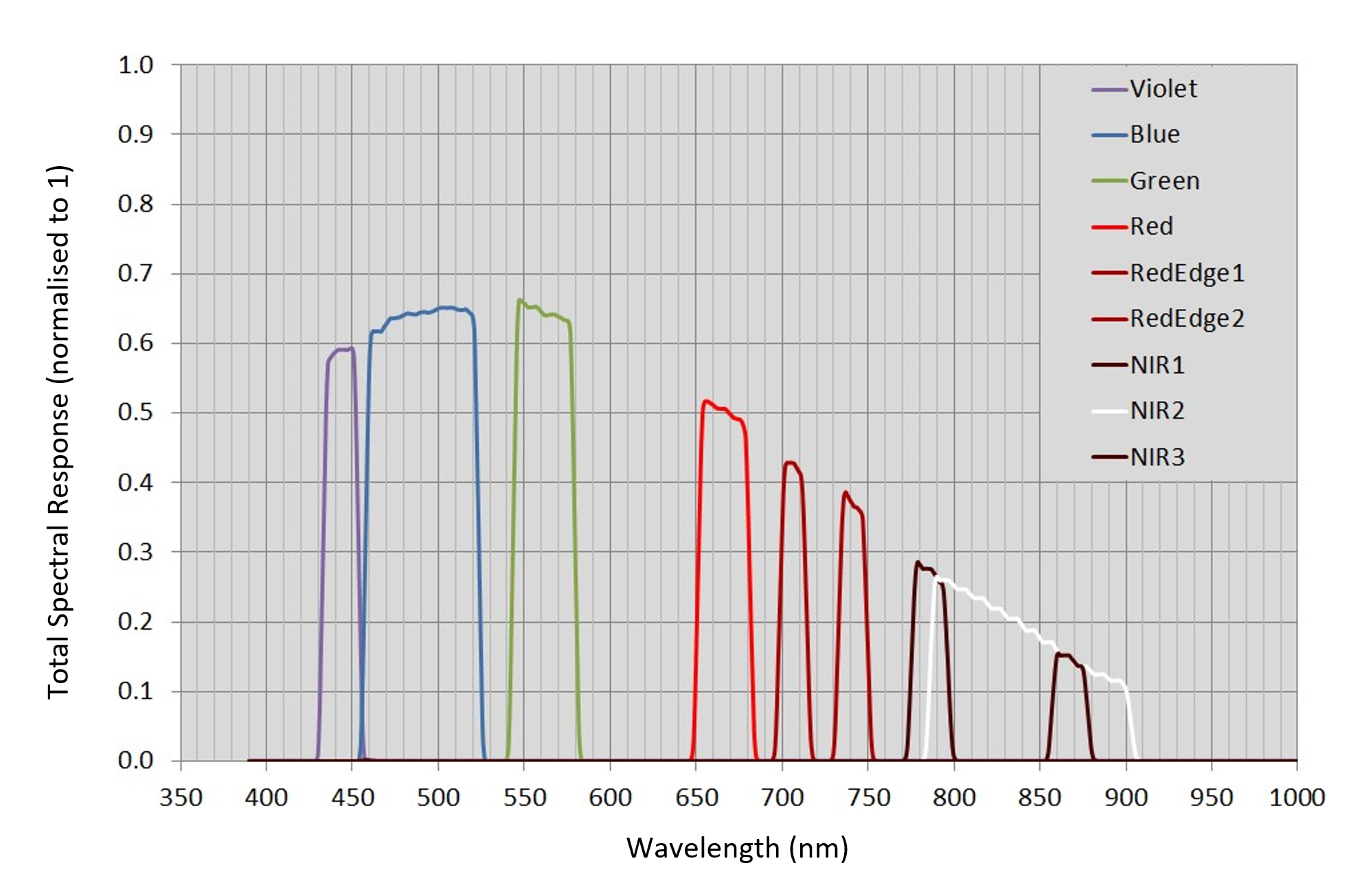
A Brief Introduction to Spectral Response Functions
What are Spectral Response Functions?
Spectral Response Functions - often abbreviated to 'SRF' - describes how sensitive an instrument's photosensor is to radiation of a particular wavelength.
Different photosensors have varying sensitivities to different wavelengths that can vary across the spectrum. Spectral response of an instrument can also be further modified with filters and refraction gratings to produce very specific areas of the spectrum that a particular instrument is sensitive to.
This can be very useful, as it can enable us to look at a select number of wavelengths, however we need to be able to account for it when looking at raw data.
For example, in an area of low spectral response to a wavelength of interest, we may have much higher signal-to-noise ratios, and must take this into consideration when looking at our data.
Consider the two SRF below:
Below is the Spectral Response Function of the Sentinel 2 Satellite:
Compare this to the Spectral Repsone Function of the Maia S2, a UAV mounted multispectral imager that FSF loan:
If we make comparisons between these two sensors without taking account for the SRF of each, then we will produce an erroneous dataset. This would be caused by the lower normalised SRF of the Maia's CMOS sensor to higher wavelengths, compared to the CMOS on board the Sentinel 2.
To browse FSF's record of SRFs for a large number of sattilites and instruments Here.
Privacy Notice Accessibility Notice




